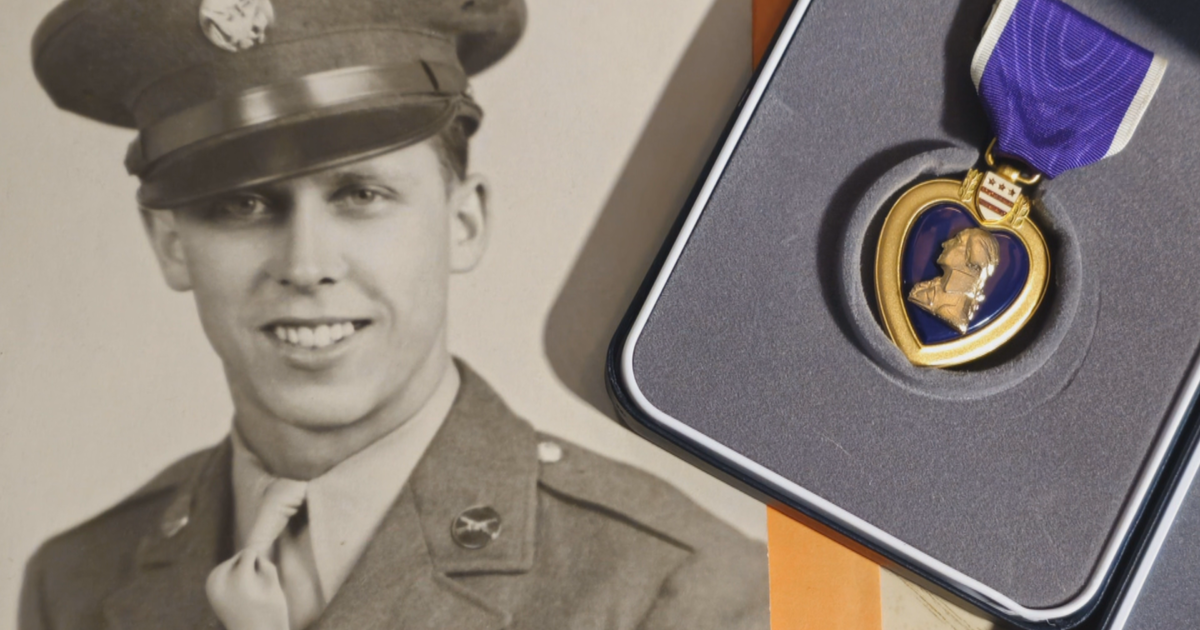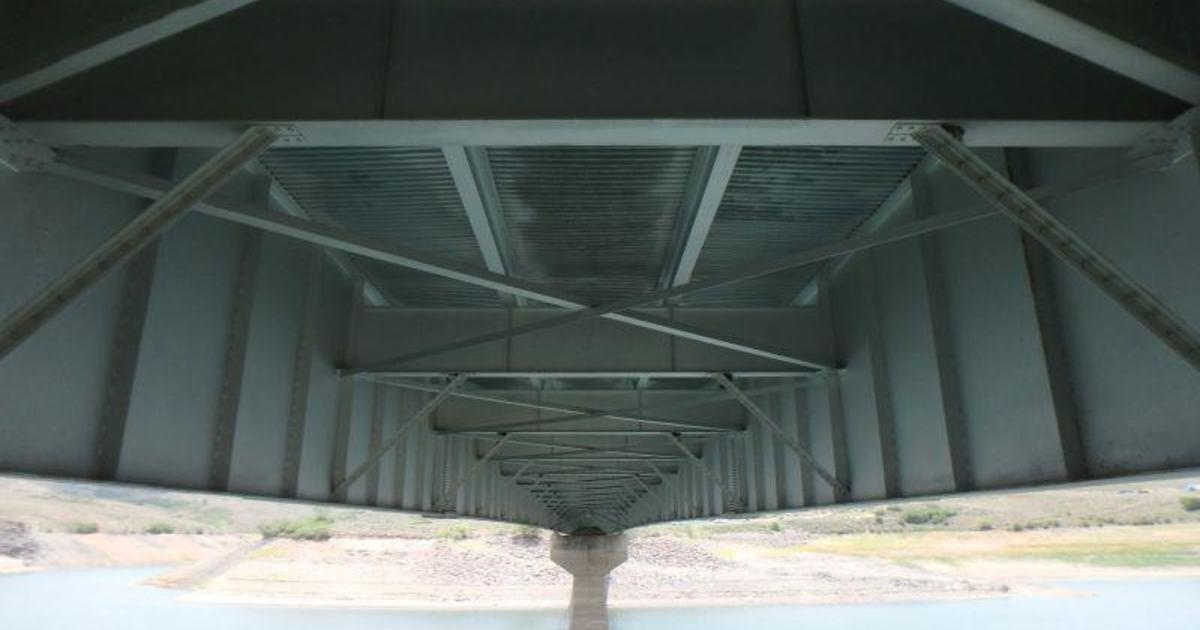Top Secret U-2 Plane Landed In Cortez 54 Years Ago
DURANGO, Colo. (AP) — Many people know the Cuban missile crisis and the Berlin Wall were milestones of the Cold War. But a lesser-known drama in the decades-long tensions between the United States and its communist foes played out in Cortez, and Saturday marks the anniversary.
The drama focused on the U-2, a high-altitude surveillance plane best remembered for being shot down in May 1960 over the Soviet Union. Francis Gary Powers was the pilot. The CIA's cover story - that the plane was used for weather observation - was blown.
But months before, a pilot from the Taiwanese Air Force named Maj. Hsichan "Mike" Hua made an emergency landing in Cortez that is still the stuff of legend among U-2 pilots.
The United States had invited Taiwanese pilots to train to fly spy planes, nicknamed "Dragon Lady" and "Black Cat," for surveillance over mainland China. President Dwight D. Eisenhower didn't want to put American pilots in the air above the communist country.
Still a gripping story
More records of the U-2 program and Hua's landing are being declassified as time passes. Hua made a video in 2009 on the 50th anniversary of the landing about his personal experience, and more information about how the United States trained Taiwanese pilots also is now available.
"I was one of six pilots in Taiwan to come to the U.S. to learn to fly a secret aircraft, so secret no one in the Chinese Air Force had any idea about what the airplane was," Hua said in his video reminiscing about the experience. "When we finally saw the glider-like aircraft with its bicycle landing gear, we were not very much impressed at first glance - until we saw it taking off on a 75-degree climb angle just after leaving the ground."
The pilots were training at Laughlin Air Force Base in Del Rio, Texas. Hua took off at about 8:30 p.m. Aug. 3, 1959, on a training flight to practice navigating by the stars. His flight plan was to Ogden, Utah, and back.
The U-2 was a dangerous plane to fly, Hua said in the video. In its first three years of flight, 17 crashes killed 11 pilots.
"Every flight, even training flights, were solo flights," Gerald Vincent, president of the Cortez Aviation Heritage Society, said in a recent interview, "and Hua was only on his seventh flight when this happened."
At about 10:28 p.m., shortly after reaching Ogden and turning back, the single engine on Hua's aircraft flamed out and the generator quit. With the loss of power at 70,000 feet, he also lost autopilot capability, and his flight suit immediately pressurized, making it more difficult for him to work the controls.
"I had to be below 35,000 feet to try an air start," Hua said. "I hit some clouds at 40,000 feet, and when I hit 35,000 feet, I was still in the clouds."
He tried to restart three times in the turbulent clouds and failed. Still in the clouds, Hua didn't want to eject because he was uncertain about the terrain below. And another concern was becoming pressing.
"I knew many peaks of the Rocky Mountains rose above 14,000 feet. I was really in trouble," Hua said. "I tried calling a nearby Air Force base and got no answer. Then I came out of the clouds. Suddenly, I saw lights on the ground."
U-2 never easy to land
There had been a lot of discussion on the Cortez City Council about turning off the airport lights at night to save money. But they were still lit at 11:30 p.m. that August night.
Although he now spotted a runway, Hua still was not home free.
"The U-2 was hard to land on a good day," said Vincent, a former pilot. "They had so much lift, they would have another pilot in a fast car on the ground along the runway, calling out the approach."
Hua was doing it alone, at night and at an airport that wasn't even on his map. And with no landing gear - that, too, was frozen when the engine flamed out.
He made the belly landing, and although the plane went off the runway, it remained upright. The damage was minor.
Frontier Airlines station manager Ray Johnston was at the airport because of a late-arriving flight. He gave Hua a pair of mechanic's dungarees to wear and called Laughlin Air Force Base, which directed him to call the National Guard to protect the top-secret plane.
"It wasn't that secret," said Tom Johnson, who was captain of the local National Guard unit. "The news was up to Main Street by morning, and a photo of the plane ran on the front page of the (Montezuma Valley) Journal."
The Journal reported that the plane was on a "weather reconnaissance mission."
Capt. Johnson first came by himself to see what had happened when he got the call.
"That Maj. Hua didn't want to have anything to do with me when I was in my civvies," he said. "But then I went home and changed into my uniform, and it was all OK. Ray (Johnston) took him home, gave him a bed and fed him."
Johnson and three of his sergeants stood guard until the Air Force arrived late the next morning, and Montezuma County Sheriff's Deputy Bill Rutledge took over the security. Hua said investigators discovered a leaking fuel line had caused the flameout.
"I didn't stick around once the Air Force got there," Johnson said. "I owned the Dolores Star, and I had a newspaper to put out. But the City Council decided that money was well spent on the lights."
The rest of the story
After receiving a Distinguished Flying Cross from the U.S. Air Force for his feat, Hua went on to become a four-star general in the Republic of China Air Force. He earned a master's degree and doctorate in aeronautical engineering at Purdue University and was in charge of Taiwan's aerospace program. Now living in Maryland, he has written or been a source for several articles about the landing. Hua also wrote a book, "Lost Black Cats: The Story of Two Captured U-2 Pilots", about two of his comrades who were captured in mainland China after their spy planes went down.
Tom Johnson spent 28 years in active and reserve service and most of his adult life as a newspaperman. He turned 91 last week.
The runway lights at the Cortez Municipal Airport no longer provide a beacon in the darkness.
"I don't know how long they've been turned off at night, but it's before my time," airport manager Russ Machen said. "They went to a new economical airport lighting system in 1990, so it's probably been at least since then."
And the U-2, according to Vincent, who tracked it down, was repaired and delivered to Special Projects, also known as the Skunkworks, at Edwards Air Force Base in Nevada. It was flying again by December 1959, reconfigured to hold an observer and infrared search equipment for missile research.
The U-2 that miraculously survived so many obstacles to make an emergency landing in Cortez rests on its laurels today on exhibit at the Blackbird Airpark at Edwards Air Force Base.
- By ANN BUTLER,The Durango Herald
(© Copyright 2013 The Associated Press. All Rights Reserved. This material may not be published, broadcast, rewritten or redistributed.)



